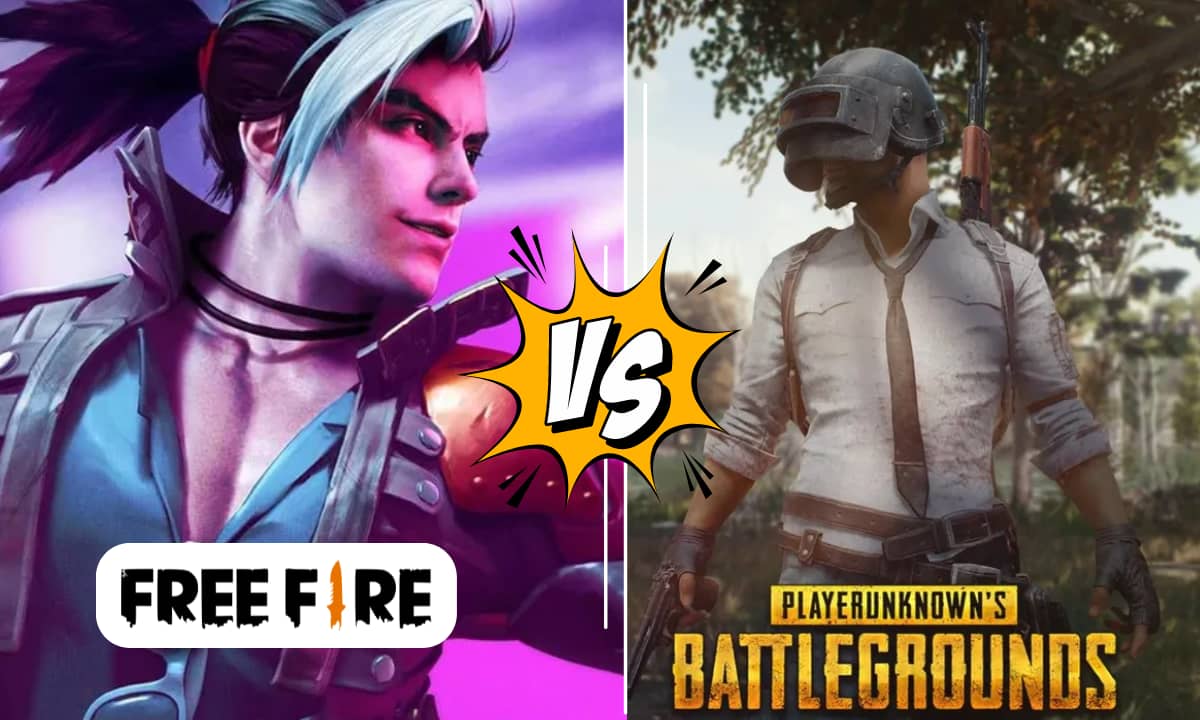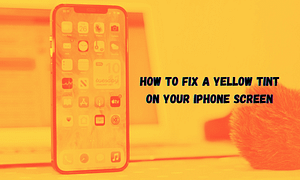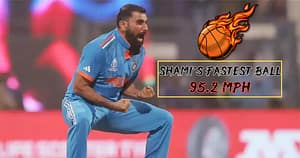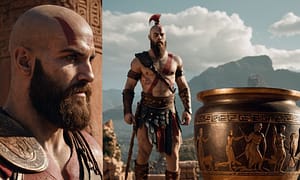Battle Royale games have taken the gaming world by storm, offering players a thrilling, adrenaline-pumping experience. Two major players in this genre are Free Fire and PUBG, captivating millions of players worldwide. But the question remains: which game reigns supreme?
In one corner, we have Free Fire, a fast-paced and action-packed battle royale game that is highly accessible and attracts mobile gamers with its captivating graphics and intuitive controls. With a shorter match duration and a diverse range of characters with unique abilities, Free Fire provides players with intense battles that keep them constantly on edge. On the other hand, we have PUBG, the game that started it all. Known for its expansive maps and realistic gameplay, PUBG sets the stage for epic battles that test players’ tactical skills and team coordination.
With its attention to detail and realistic weaponry, PUBG provides an immersive and intense experience that keeps players coming back for more. Whether you prefer the quick and intense battles of Free Fire or the immersive and tactical gameplay of PUBG, both games offer unique experiences that have garnered a massive following. So, which game will come out on top? Let the battle royale showdown begin.
Table of contents
Overview of Free Fire
Free Fire is a free-to-play mobile battle royale game that has taken the world by storm. Released in 2017, it quickly rose to become the most downloaded mobile game globally in 2019 and boasts over 1 billion downloads. Its focus on fast-paced action, accessible controls, and unique characters has propelled it to the top of the charts.
Here’s a quick rundown of what makes Free Fire so popular:
- Thrilling Battle Royale Gameplay: Up to 50 players parachute onto a map and fight to be the last one standing. Matches are quick and intense, typically lasting around 10 minutes, making it perfect for on-the-go bursts of action.
- Strategic Depth: While the core gameplay loop is familiar, Free Fire offers a variety of weapons, vehicles, and items to scavenge. The unique characters with special abilities add another layer of strategy, allowing players to find their perfect playstyle.
- Accessible and Optimized for Mobile: Free Fire is known for its smooth performance on even less powerful devices. The intuitive controls and aiming mechanics make it easy for newcomers to jump in and frag out.
- Constant Evolution: Garena, the publisher, consistently releases updates with new content, characters, and game modes. In 2021, they launched Free Fire Max, a graphically enhanced version of the game for those seeking a more immersive experience.
Overall, Free Fire’s combination of accessibility, strategic depth, and frenetic action has made it a global phenomenon. Whether you’re a seasoned gamer or a mobile newcomer, Free Fire offers a thrilling and competitive battle royale experience.
Overview of PUBG
PUBG, short for PlayerUnknown’s Battlegrounds (though now simply PUBG: Battlegrounds), is a genre-defining multiplayer online battle royale game. It was a massive success upon release in 2017, popularizing the last-man-standing, looting-and-shooting style of gameplay that many other games have emulated since.
Here’s a breakdown of what PUBG is all about:
- Large-Scale Last Man Standing: Up to 100 players parachute onto a vast map and scramble to find weapons, equipment, and vehicles. The playable area shrinks over time, forcing players into intense confrontations as they fight to be the sole survivor.
- Strategic Depth: PUBG offers a wide variety of weapons, vehicles, and tactical gear to find and utilize. Positioning, map awareness, and teamwork (if playing with squads) are all crucial for success.
- Different Perspectives: Players can choose between third-person and first-person perspectives, allowing for customization of their playstyle and preference.
- Evolving Content: PUBG: Battlegrounds receives regular updates with new maps, weapons, and gameplay modes. This keeps the experience fresh and exciting for veterans.
- Available on Multiple Platforms: Originally a PC game, PUBG has expanded to consoles (PS4, Xbox One) and even mobile devices (PUBG Mobile is a separate game with a similar core experience).
PUBG’s influence on the gaming landscape is undeniable. It remains a top contender in the battle royale space, offering a strategic, intense, and constantly evolving experience for players.
Gameplay comparison – mechanics and features
Both PUBG and Free Fire are battle royale giants, but they have distinct approaches to mechanics and features. Here’s a head-to-head breakdown:
Core Mechanics:
- Match Length: PUBG offers longer matches (around 30 minutes) that emphasize strategic planning and resource management. Free Fire’s quicker matches (around 10 minutes) favor fast-paced action and adaptability.
- Player Count: PUBG throws you into a larger battlefield with 100 players, while Free Fire’s 50-player matches create a more intimate and frenetic experience.
- Perspective: PUBG offers both third-person and first-person perspectives, allowing players to choose based on preference. Free Fire is exclusively third-person.
Weapons and Items:
- Realism vs. Accessibility: PUBG leans towards a more realistic approach to weapon handling and ballistics. Free Fire prioritizes accessibility with simpler weapon mechanics and faster action.
- Item Variety: Both games offer a wide range of weapons and equipment, but PUBG boasts a more extensive and detailed selection.
Special Features:
- Characters and Abilities: Free Fire is all about unique characters with special abilities that add a layer of variety and customization to gameplay. PUBG focuses on a more grounded experience without character abilities.
- Customization: Free Fire offers extensive character and weapon customization options for a more personalized experience. PUBG has some customization options, but to a lesser extent.
Mobile Optimization:
- Performance: Free Fire is known for its smooth performance on even low-end devices. PUBG Mobile offers a good experience on most phones, but may require a more powerful device for optimal performance.
In summary:
- PUBG: Offers a larger-scale, strategic experience with more realistic gunplay and a wider variety of weapons and vehicles. Ideal for players who enjoy planning and teamwork.
- Free Fire: Provides a fast-paced, action-packed experience with unique character abilities and a focus on accessibility. Perfect for mobile gamers who want quick bursts of intense battle royale action.
Graphics and visuals comparison
When it comes to graphics and visuals, PUBG and Free Fire take very different approaches. Here’s a breakdown of how they stack up:
Additional Considerations:
| Section | PUBG | Free Fire |
| Art Style: | Leans towards a more realistic aesthetic. Environments are detailed, with textures that aim to represent real-world materials. Character models are more human-like and grounded in reality. | Utilizes a vibrant, cartoonish art style. This allows for more colorful environments and character designs, making it stand out on mobile devices. |
| Graphical Fidelity: | Powered by the Unreal Engine, PUBG boasts impressive visuals. Lighting effects, shadows, and textures are more detailed and realistic, creating a more immersive experience. | Prioritizes performance over graphical fidelity. Textures are simpler, and environments are less detailed. This ensures smooth gameplay on a wider range of devices. |
| Effects and Visual Flourishes: | Utilizes more subtle visual effects, focusing on realistic muzzle flashes, explosions, and weather conditions. | Employs more pronounced visual effects for actions like weapon firing and character abilities, creating a more flashy and arcade-like feel. |
| Overall: | Targets gamers who prioritize stunning visuals and a realistic atmosphere. | Caters to players who value smooth performance and a visually distinct style, even on less powerful devices. |
Map and environment comparison
The battlegrounds of PUBG and Free Fire offer distinct landscapes and strategic considerations. Let’s delve into what sets them apart:
Map Size and Scale:
- Vast Battlefields: PUBG boasts expansive maps (up to 8×8 kilometers) that feature diverse environments like forests, deserts, and urban areas. These larger maps encourage a slower, more methodical approach to strategy.
- Compact Arenas: Free Fire’s maps are smaller (typically around 2×2 kilometers) and focus on close-quarter combat. These condensed environments lead to faster-paced and more frequent encounters.
Environmental Variety:
- Realistic Terrain: PUBG’s maps offer a wider variety of realistic terrain types, from rolling hills and dense forests to sprawling cities and treacherous wastelands. This variety demands players to adapt their strategies based on the specific location.
- Themed Environments: Free Fire’s maps have distinct themes, such as tropical islands, industrial complexes, and futuristic training grounds. While offering some variety, these environments prioritize clear sightlines and close-quarters combat zones.
Interactive Elements:
- Dynamic Environments: PUBG features more dynamic environmental elements, such as destructible objects and weather effects (fog, rain) that can impact gameplay.
- Static Environments: Free Fire’s environments are generally static, with limited interactive elements beyond basic cover mechanics.
Overall:
- PUBG: Offers a wider variety of expansive and realistic environments, encouraging diverse strategies and long-range engagements.
- Free Fire: Provides smaller, thematically distinct maps with a focus on close-quarters combat and faster-paced action.
Weapons and equipment comparison
The arsenals of PUBG and Free Fire offer distinct tools for achieving dominance. Here’s a breakdown of what you can expect:
Weapon Realism:
- Simulative Ballistics: PUBG features more realistic weapon handling and ballistics. Bullet drop, bullet velocity, and recoil patterns are more pronounced, requiring players to master these mechanics for effective combat.
- Simplified Gunplay: Free Fire prioritizes accessibility with simpler weapon mechanics. Ballistics and recoil are less complex, allowing players to pick up and play more easily.
Weapon Variety:
- Extensive Arsenal: PUBG boasts a wider selection of weapons, including assault rifles, sniper rifles, shotguns, SMGs, pistols, and DMRs (Designated Marksman Rifles). This allows for a variety of playstyles and strategic approaches.
- Focused Selection: Free Fire offers a more focused selection of weapons, with a strong emphasis on close-quarter combat options like SMGs and shotguns. There are still assault rifles and sniper rifles, but with a slightly smaller pool to choose from.
Weapon Attachments:
- Detailed Customization: PUBG features a wider array of weapon attachments that significantly alter weapon performance. Players can fine-tune their guns for specific situations, like long-range accuracy or close-quarters control.
- Limited Customization: Free Fire offers a smaller selection of attachments that provide simpler performance boosts. Customization is faster and more intuitive, but less granular.
Equipment and Throwables:
- Strategic Tools: PUBG offers a wider variety of equipment, including scopes of varying magnification, first-aid kits, painkillers, and tactical grenades (smoke, flashbangs, Molotov cocktails). This allows for more strategic use of equipment to support different playstyles.
- Basic Arsenal: Free Fire offers a more basic selection of equipment, with limited scopes, healing items, and just one type of throwable (grenades). The focus is on core gunplay rather than extensive tactical options.
Overall:
- PUBG: Caters to players who enjoy mastering weapon mechanics, utilizing a wide variety of guns and attachments, and employing strategic equipment for different situations.
- Free Fire: Provides a more accessible weapon system with a focus on close-quarters combat and simpler customization options.
Player base and popularity
Both PUBG and Free Fire boast massive player bases, but their popularity trends and regional strongholds differ. Here’s a breakdown of the battle royale landscape:
Global Reach:
- PUBG: Held the title of the most downloaded mobile game globally in 2017. It maintains a strong presence worldwide, with tens of millions of daily active users. However, its popularity has fluctuated in some regions due to factors like competition and regional bans.
- Free Fire: Gained significant traction in recent years, particularly in Southeast Asia and Latin America. It surpassed PUBG Mobile in terms of global downloads in 2019 and has seen consistent growth, especially on mobile devices.
Esports Scene:
- Established Tournaments: PUBG boasts a well-established esports scene with large prize pools and global tournaments like the PUBG Mobile Global Championship.
- Emerging Force: Free Fire’s esports scene is rapidly growing, with tournaments like the Free Fire World Series attracting a significant viewership.
Mobile vs. PC:
- Multi-Platform Dominance: PUBG started on PC and later expanded to mobile with PUBG Mobile. It retains a strong presence on both platforms.
- Mobile Powerhouse: Free Fire is primarily a mobile-focused game, though Garena Free Fire Max offers a graphically enhanced version for some mobile devices.
Overall:
- PUBG: Maintains a strong global presence with a dedicated player base across PC and mobile, particularly in regions where it established itself early on.
- Free Fire: Has seen explosive growth, especially on mobile devices, with a large and engaged player base concentrated in Southeast Asia and Latin America. Its esports scene is rapidly developing.
Pros and cons of Free Fire
Free Fire has become a mobile gaming juggernaut, but like any game, it has its strengths and weaknesses. Here’s a breakdown of the pros and cons to help you decide if it’s the right battle royale for you.
Pros:
- Fast-paced Action: Matches are quick and intense, typically lasting around 10 minutes, making it perfect for on-the-go bursts of excitement.
- Accessible and Optimized for Mobile: Runs smoothly even on less powerful devices with intuitive controls, making it easy for newcomers to jump in and play.
- Unique Characters with Abilities: Each character has a special ability that adds a layer of strategy and variety to gameplay, allowing players to find their perfect playstyle.
- Constant Evolution: Regular updates with new content, characters, game modes, and collaborations keep the experience fresh and exciting.
- Large and Vibrant Community: Especially strong in Southeast Asia and Latin America, Free Fire boasts a dedicated player base for easy matchmaking and social interaction.
- Free-to-Play: Freemium model allows everyone to play for free, with optional in-app purchases for cosmetic items.
Cons:
- Steep Learning Curve for Mastering Mechanics: While accessible, mastering weapon recoil, character abilities, and strategic movement takes time and practice.
- Focus on Close-Quarters Combat: The smaller maps and emphasis on SMGs and shotguns may not appeal to players who enjoy long-range engagements and tactical gunplay.
- Potential for Pay-to-Win Elements: While skill is crucial, some in-app purchases can offer cosmetic advantages that may impact gameplay for some players.
- Shorter Matches May Lack Depth: Compared to some other battle royales, Free Fire’s shorter matches may offer less strategic complexity for players who prefer a slower, more methodical approach.
- Toxicity: As with any online game, Free Fire can have a problem with toxic behavior from some players.
Overall:
Free Fire is a fantastic choice for mobile gamers who crave fast-paced action, unique characters, and a constantly evolving experience. However, if you prefer a more strategic battle royale with a focus on long-range combat or dislike the potential for pay-to-win elements, you might want to consider other options.
Pros and cons of PUBG
PUBG, the game that popularized the battle royale genre, has carved its niche in the gaming world. But is it the right fit for you? Let’s delve into the pros and cons of PUBG to help you decide.
Pros:
- Strategic Depth: Offers a complex and rewarding gameplay experience. Mastering weapon mechanics, utilizing diverse equipment, and adapting to different environments requires strategic thinking and planning.
- Large-Scale Battles: Up to 100 players fight for survival, creating a thrilling and unpredictable atmosphere. Teamwork and communication are crucial for success in squad play.
- Variety in Weaponry: Boasts a vast arsenal of weapons with realistic ballistics and recoil patterns. Players can choose from assault rifles, sniper rifles, shotguns, SMGs, and more, catering to different playstyles.
- Extensive Customization: Allows fine-tuning weapons with a wide array of attachments, and offers cosmetic customization options for a personalized experience.
- Established Esports Scene: Features well-organized tournaments with significant prize pools, attracting top players and fostering a competitive environment.
- Multiple Platforms: Available on PC, consoles (PS4, Xbox One) and mobile (PUBG Mobile), offering flexibility in how you choose to play.
Cons:
- Steeper Learning Curve: Mastering the game’s mechanics, ballistics, and strategic elements takes significant time and practice. It might be less welcoming to casual players.
- High System Requirements: The PC version can be demanding on hardware, requiring a powerful computer for optimal performance.
- Longer Matches: Matches can last up to 30 minutes, which may not be ideal for players seeking shorter bursts of gameplay.
- Potential for Cheaters: Like any online game, PUBG can be susceptible to cheating, which can be frustrating for legitimate players.
- Focus on Realism: The emphasis on realistic weapon handling and ballistics might feel less accessible for players who prefer faster-paced, arcade-style shooting.
- Mobile Version (PUBG Mobile) May Differ: While PUBG Mobile offers a similar core experience, it has some differences in features, graphics, and monetization compared to the PC version.
Overall:
PUBG is a rewarding experience for players who enjoy strategic depth, large-scale battles, and mastering a complex gameplay system. However, the steeper learning curve, longer matches, and higher system requirements might deter some players.
Conclusion – which game reigns supreme?
There’s no single victor in the PUBG vs Free Fire battle royale war. Both games excel in different areas and cater to distinct player preferences. Here’s a quick recap to help you decide:
Choose PUBG if you:
- Enjoy strategic depth and mastering complex mechanics.
- Prefer large-scale battles with a focus on teamwork and planning.
- Want a wide variety of weapons with realistic ballistics.
- Appreciate a thriving esports scene and competitive environment.
- Have a powerful PC or console for optimal performance (or a capable mobile device for PUBG Mobile).
Go for Free Fire if you:
- Crave fast-paced action and shorter, more intense matches.
- Prioritize accessibility and smooth performance on mobile devices.
- Enjoy unique characters with special abilities that add variety.
- Want a constantly evolving experience with regular updates.
- Are part of the vibrant player base in Southeast Asia and Latin America.
Ultimately, the best game depends on your individual preferences. If you’re unsure, why not try both and see which one reigns supreme for you?








